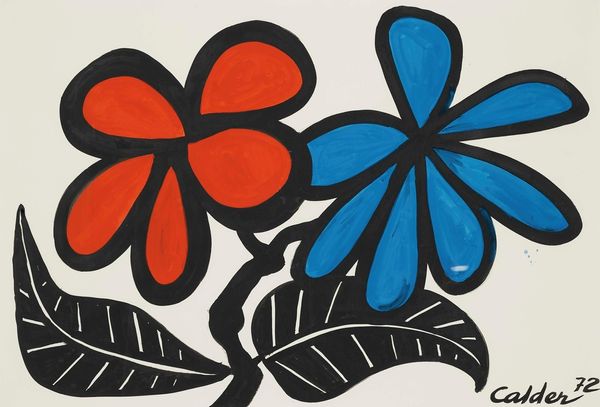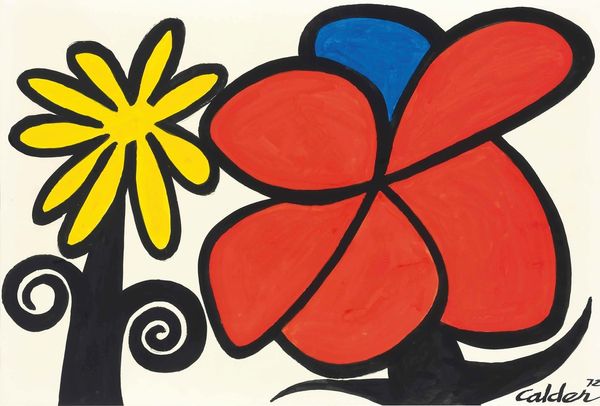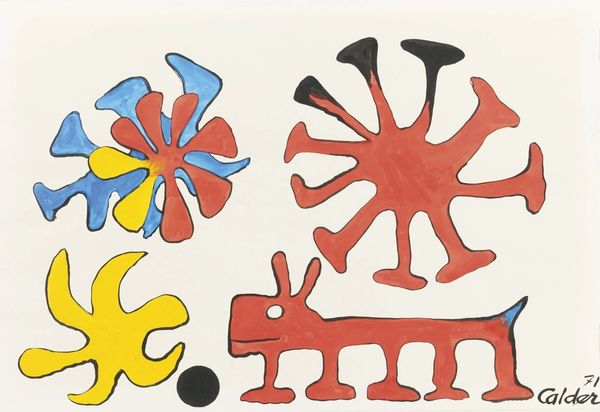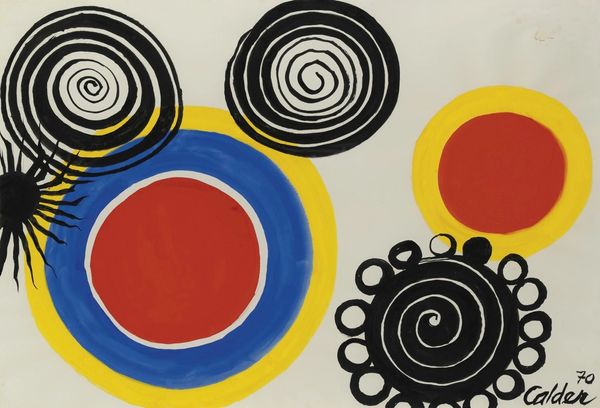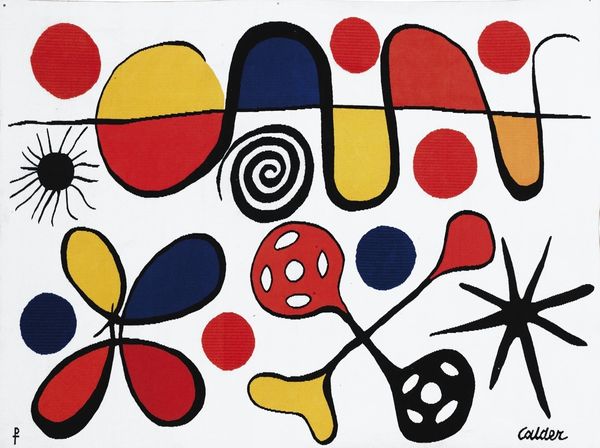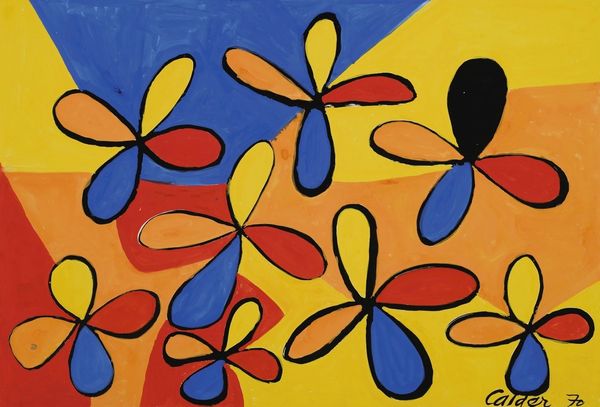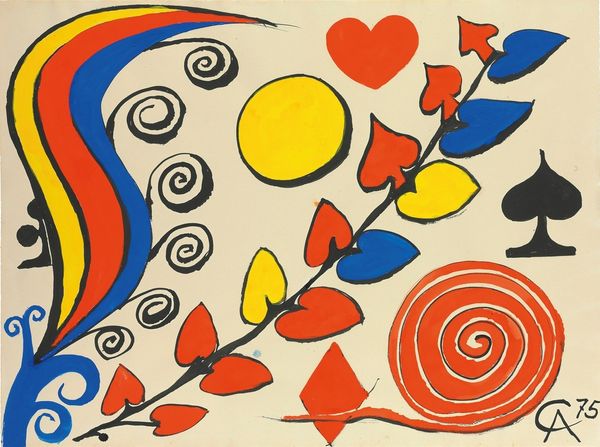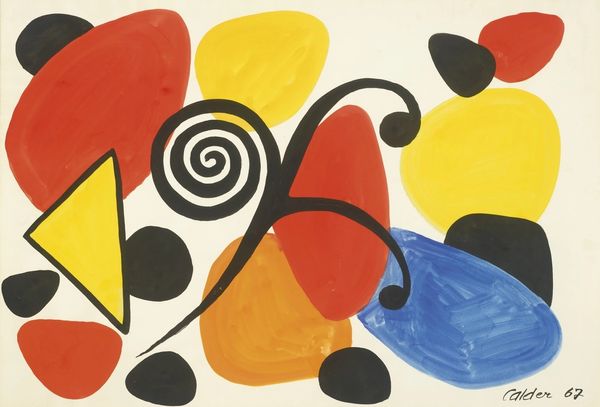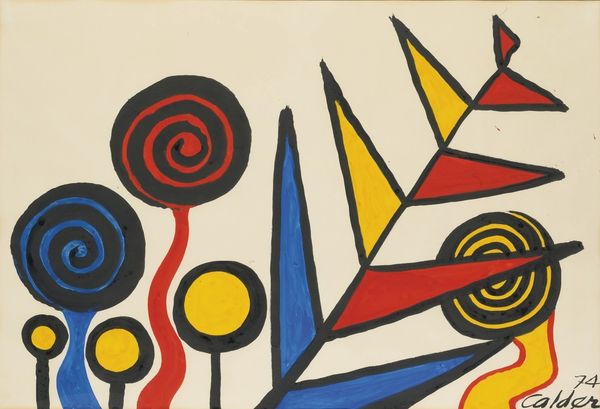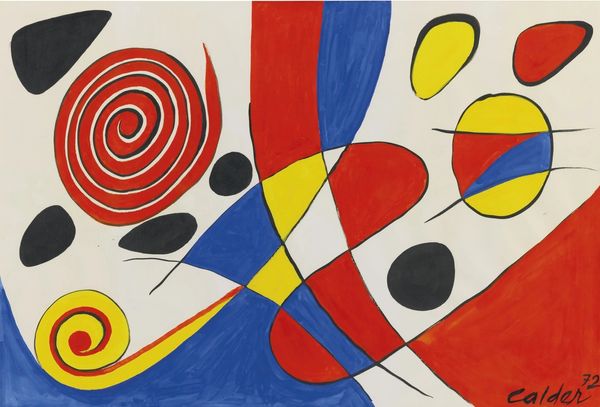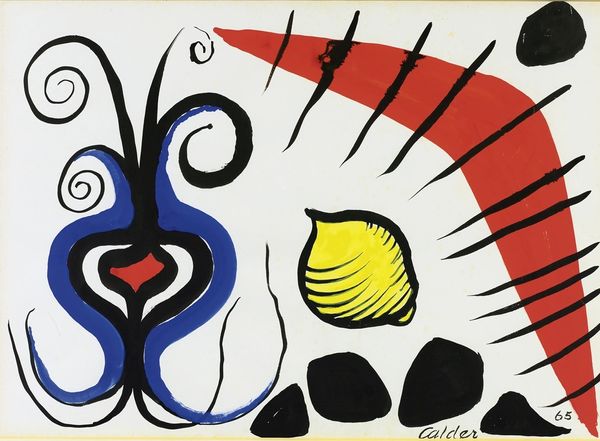
Copyright: Modern Artists: Artvee
Curator: Standing before us is Alexander Calder's "Marguerites," a painting executed in 1971 using acrylic paint. Editor: It feels instantly playful, doesn't it? Like Matisse on a sugar rush. These bright, almost childlike shapes are just bobbing there. Primary colors! Curator: The composition relies heavily on simplified geometric forms and bold colors characteristic of pop art. Note the contrast between the stark white background and the vivid floral elements. Editor: I am immediately drawn to the asymmetrical arrangement, which gives it a breezy, spontaneous energy. And there's that red square with spindly antennae. What's that all about? It brings a sense of structured... unease to the piece. Like an intellectual asterisk. Curator: Indeed. This deviation interrupts the harmony we expect. The formal approach might analyze the square in relation to the soft floral shapes. It challenges a simple reading, introducing tension between rigidity and organic form. Editor: Right. So you get this dance happening—all this seemingly carefree stuff clashing with the square, and also some monochrome ones like a shadowy memory. Perhaps they’re fading blooms or sketches from a sketchbook. And together they vibrate... strangely, almost musically. Curator: I would suggest observing the execution itself, in addition to colors. See how freely, spontaneously he laid on paint to build blooms. Editor: "Marguerites", for me it suggests that even with minimal elements and basic forms, profound visual joy – with a little twitch – can be delivered. Curator: A reminder, perhaps, that complex art historical analysis and visceral engagement can meet halfway.
Comments
No comments
Be the first to comment and join the conversation on the ultimate creative platform.
